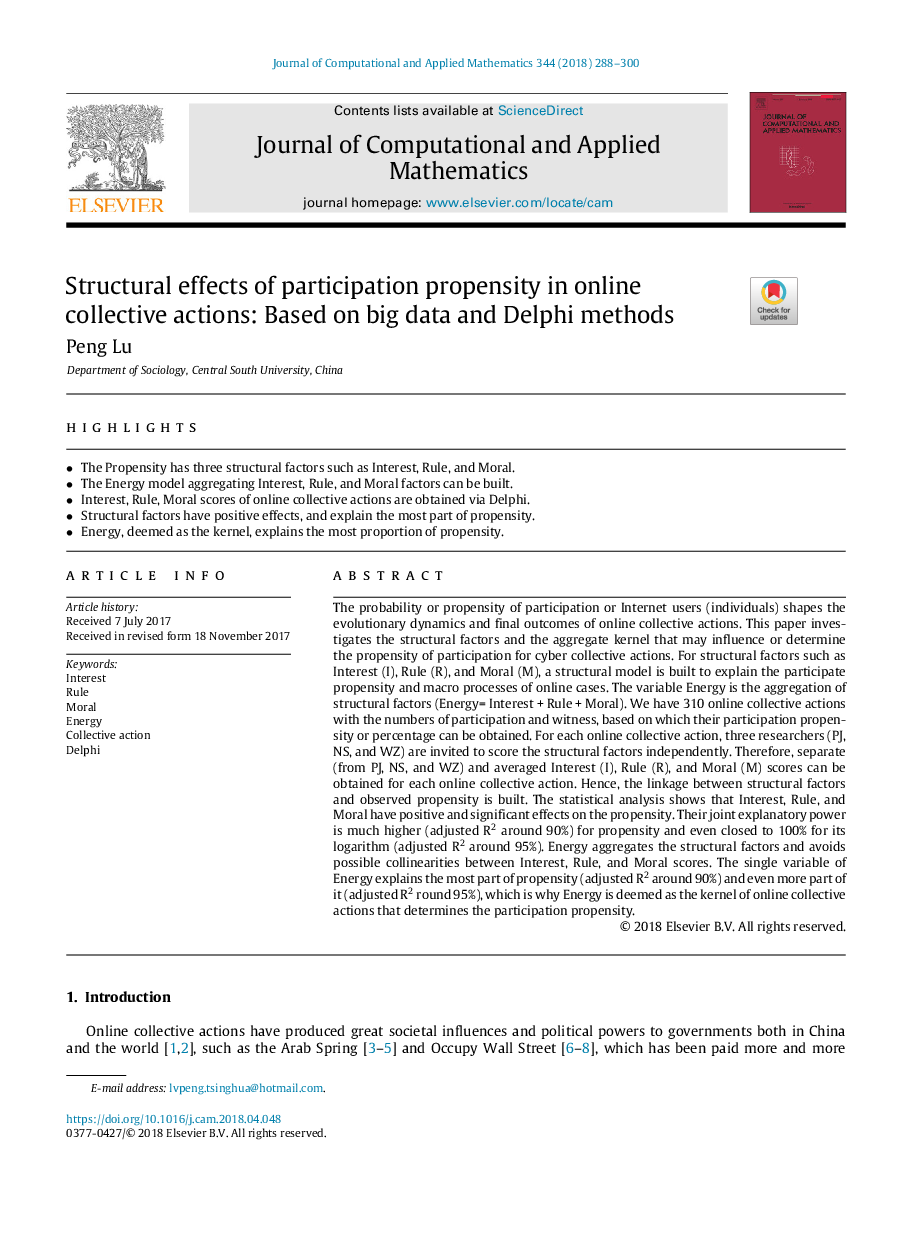| Article ID | Journal | Published Year | Pages | File Type |
|---|---|---|---|---|
| 8901754 | Journal of Computational and Applied Mathematics | 2018 | 13 Pages |
Abstract
The probability or propensity of participation or Internet users (individuals) shapes the evolutionary dynamics and final outcomes of online collective actions. This paper investigates the structural factors and the aggregate kernel that may influence or determine the propensity of participation for cyber collective actions. For structural factors such as Interest (I), Rule (R), and Moral (M), a structural model is built to explain the participate propensity and macro processes of online cases. The variable Energy is the aggregation of structural factors (Energy= Interest + Rule + Moral). We have 310 online collective actions with the numbers of participation and witness, based on which their participation propensity or percentage can be obtained. For each online collective action, three researchers (PJ, NS, and WZ) are invited to score the structural factors independently. Therefore, separate (from PJ, NS, and WZ) and averaged Interest (I), Rule (R), and Moral (M) scores can be obtained for each online collective action. Hence, the linkage between structural factors and observed propensity is built. The statistical analysis shows that Interest, Rule, and Moral have positive and significant effects on the propensity. Their joint explanatory power is much higher (adjusted R2 around 90%) for propensity and even closed to 100% for its logarithm (adjusted R2 around 95%). Energy aggregates the structural factors and avoids possible collinearities between Interest, Rule, and Moral scores. The single variable of Energy explains the most part of propensity (adjusted R2 around 90%) and even more part of it (adjusted R2 round 95%), which is why Energy is deemed as the kernel of online collective actions that determines the participation propensity.
Related Topics
Physical Sciences and Engineering
Mathematics
Applied Mathematics
Authors
Peng Lu,
